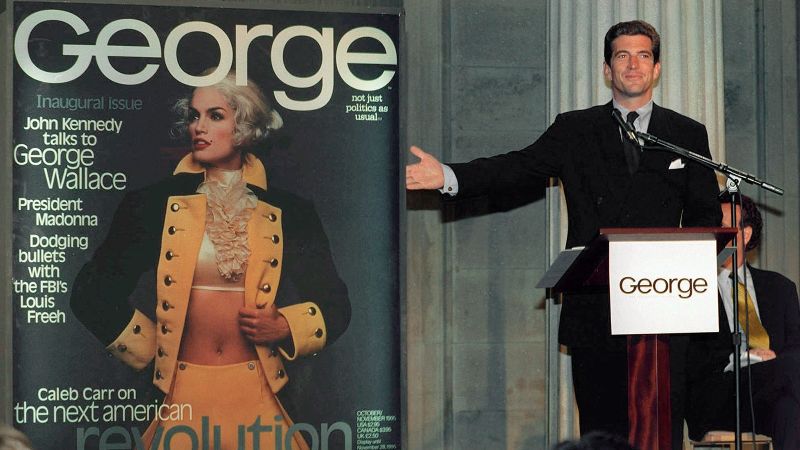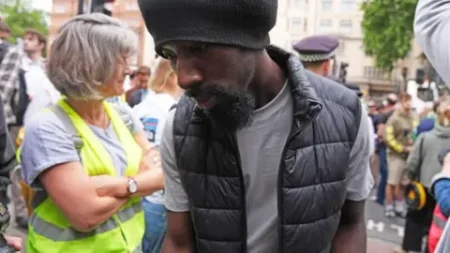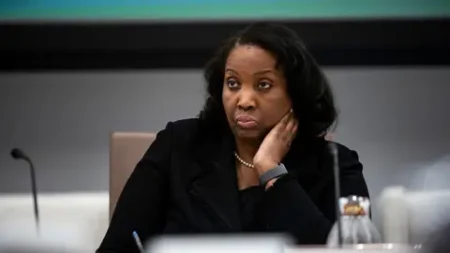John F. Kennedy Jr., often simply referred to as JFK Jr., left an indelible mark on American media culture, particularly through his magazine, “George.” Launched 30 years ago, it emerged in a time when New York City publications were a powerhouse of influence and glamour. The city teemed with gossiped-about editors who flitted around in black cars, a stark contrast to John’s more relatable hobby of riding his bike around town. As Nancy Jo Sales, a longtime magazine writer, remarked, despite being labeled a “himbo” by tabloid media, JFK Jr. was no fool. Coming from a prominent lineage—the son of John F. Kennedy and Jacqueline Kennedy Onassis—he possessed an inimitable blend of intelligence, kindness, and passion for journalism. His ambition was to craft an exceptional magazine, reflecting both the zeitgeist of the 1990s and the inherent charisma that came with his name.
“George” debuted in September 1995 with the audacious goal of intertwining politics and celebrity, an idea symbolized humorously by featuring Cindy Crawford dressed as George Washington on its cover. As Sasha Issenberg, a teenage intern at the time, noted, the magazine represented a transformative shift occurring within American culture and politics, encapsulating those moments from a year marked not only by pop culture events but serious national tragedies, such as the Oklahoma City bombing and the O.J. Simpson trial’s fallout.
The mid-90s were fundamentally different from today; magazines served as primary conduits of coolness and culture, shaping social narratives. As Amy Odell observed, back then it was magazine editors who were the ultimate trendsetters. At the time of “George’s” inception, iconic figures like Anna Wintour of Vogue and Tina Brown of the New Yorker defined the era, each bringing her unique flair to the media landscape. The contrast was stark for “George,” which, despite JFK Jr.’s A-list connections, lacked the luxurious setting enjoyed by more established publications.
As JFK Jr. sought to establish his place within this elite world, his publication was designed to offer something fresh. Despite getting criticized as a vanity project—allegations that carried a certain weight given his lineage—the magazine exceeded expectations, quickly filling pages with stories and securing robust ad sales. The ambition behind “George” was substantial, with editorial teams rapidly assembling content to match the interest it generated among readers and advertisers alike. As recollections from those involved paint a picture, the atmosphere at “George” was electric; creativity flowed amidst the chaos of a lively office frequented by high-profile guests like Demi Moore and Barbara Walters.
However, the glittering success of “George” was not to last indefinitely. Just as it found its footing, the landscape began to shift. After JFK Jr.’s tragic death in July 1999, the magazine struggled financially, ultimately shutting down in March 2001, having lost close to $10 million the previous year. DePaulo, a staff writer, foresaw the inevitable collapse without JFK Jr.’s leadership, despite the magazine’s initial promise and innovative approach. Looking back, many noted that the cultural and political climate that “George” aimed to address was becoming increasingly fragmented, making it so much more challenging to maintain the publication’s ethos of a post-partisan environment.
As the magazine industry transitioned into the digital age, the glitz and glamour that once defined it began to crumble under the weight of financial realities. The likes of Condé Nast, once synonymous with magazine prestige, started facing difficult decisions about the future. Writers who thrived in a more extravagant era found themselves adapting to a new world, where gigs replaced stable salaries, and the sense of community within publications began to erode. The narrative of “George,” and of magazines more broadly, serves as a microcosm of larger societal shifts; what was once a powerful medium for storytelling and influence now struggles to retain its grip on a world transformed by the very social media Kennedy had once envisioned reaching for a more diverse audience.
In retelling JFK Jr.’s story, the legacy of “George” becomes emblematic not just of glamour but also of how media reflects—and yet often falters against—the complexities of changing eras. Today, as the gates of information have been democratized, everyone has a platform, and journalism has become more accessible, albeit diluted, hinting at a future where the role of the traditional journalist might be forever altered.












